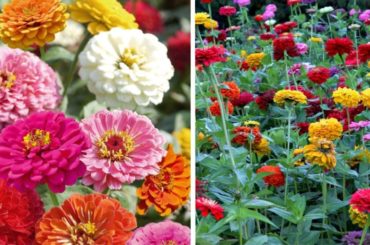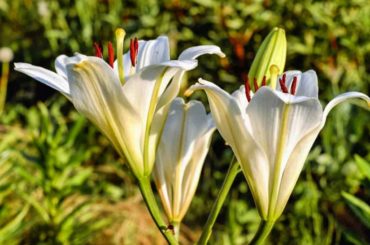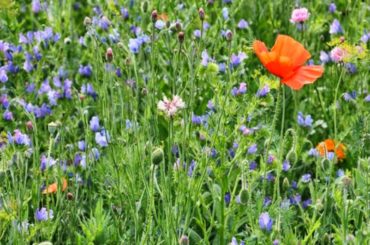Lupine
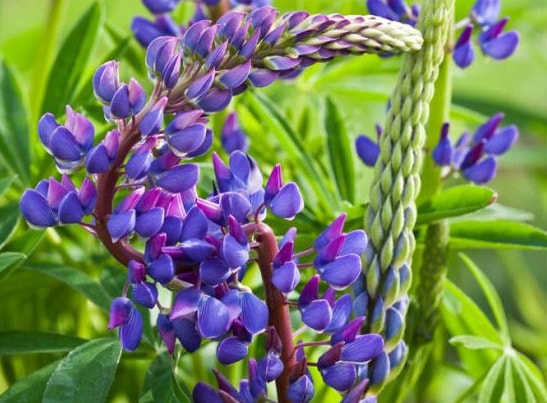
Lupines are fragrant bunches of flowers with a pronounced blue color or sometimes even lighter and slightly golden. It does not like clay soils or calcareous soils. They are easy to grow and almost wild. The more silica-rich the soil, the brighter the blue. The Baptisias australis is the simplest to succeed, it is also the finest. They can reach 1.50 m in height.
Hyacinth
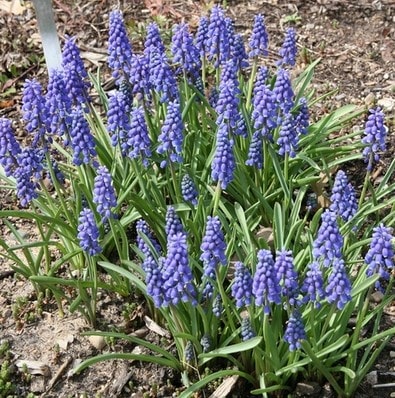
Hyacinth comes in different forms: Eastern Hyacinth and Hyacinth. Eastern hyacinth measures between 15 and 25 cm, it can be simple or in a cluster as in the photo. It comes in different shades of blue, but also in white, red, pink and yellow. You cultivate it in the sun or partial shade, outdoors or indoors in forced cultivation. It is particularly adapted to the massifs. The hyacinth is different and it grows in the undergrowth or in a soil of heather earth. It breeds naturally and is in the form of ears.
hydrangea
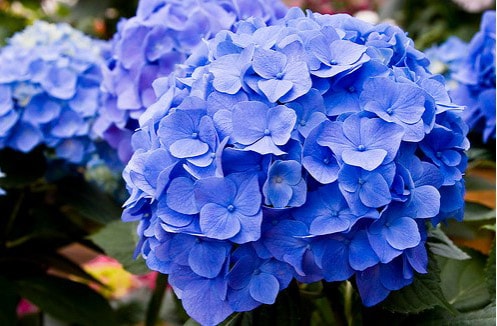
The hydrangea is a round clustered flower. The most difficult thing is not to cultivate it, but rather to keep it very blue. However, there are tips for this, you must put slate in pieces at the foot and around the shrub. It is the acidity of the soil which determines the hue of these flowers, the more acid it is, the more it is blue. Aluminum sulphate makes it possible to obtain the necessary ph. Pure it is very beautiful, think to put fertilizer.
The delphinium
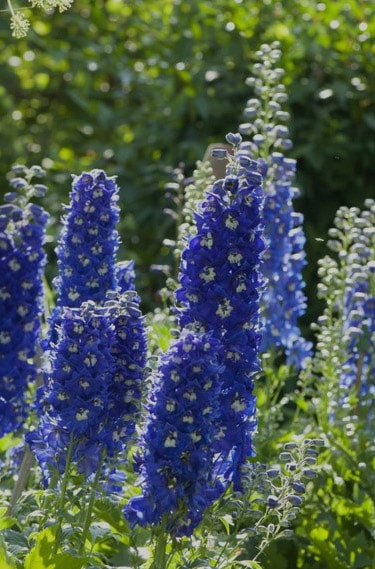
The delphinium is a very decorative flower that comes in many varieties. They are often high and a very pronounced blue although they are also in other colors. They are fine and delicate. In clusters or ears, they usually bloom between June and August. The flowers can be rather flat or rounded. They grow quite easily with minimal maintenance.
Blue cornflower
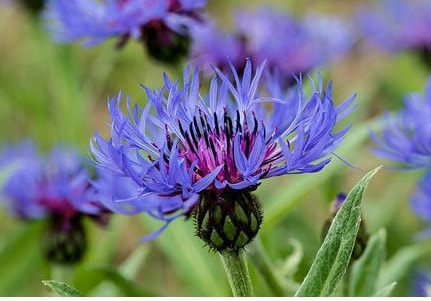
These very pretty perennial plants have many advantages: they accommodate both winter and summer heat. Its blue pulling on the purple is absolutely very attractive and bright. They are perfect for decorative planting and attract pollinating insects. They are often found along the stairs or on the edge of a kitchen garden. They usually like exposure in full sun and soils drained and rich.
>> To read also: 30 spring flowers: the most beautiful!
Brodiae or Triteleia
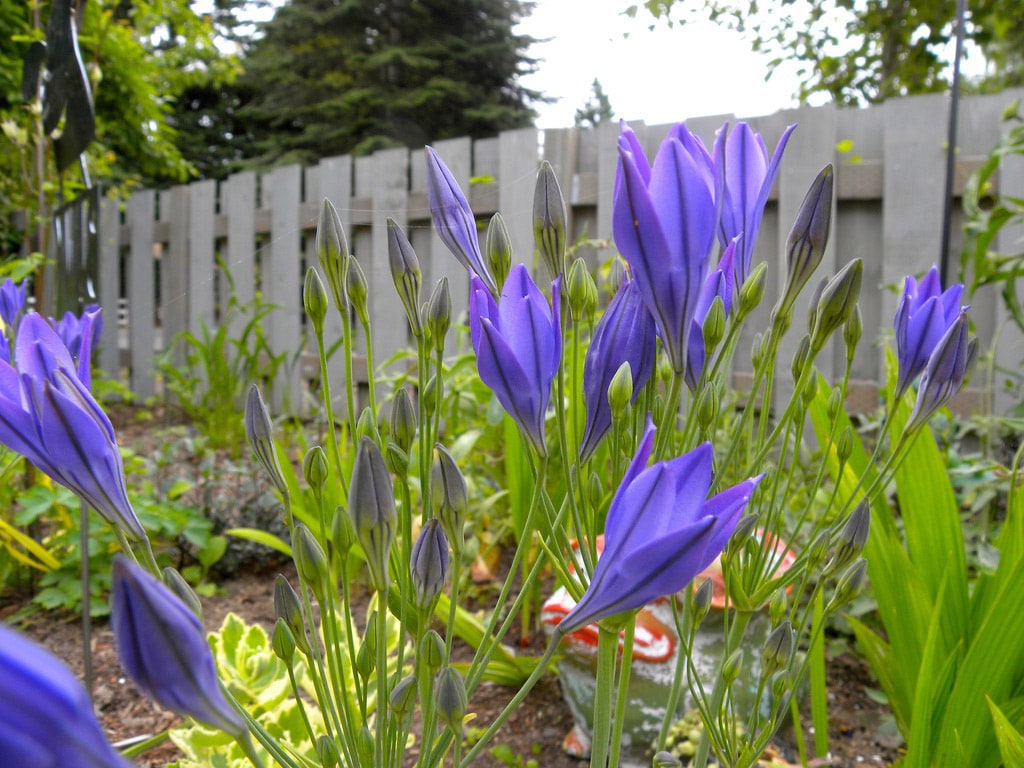
Brodiae or Triteleia is for many of us a beautiful unknown. Like almost all bulbous flowers, you will not see it in summer. It flowers in June, but its foliage appears in winter. It must be planted in the fall in a well-drained soil and not too poor. It prefers sufficiently mild climates. It must also be dry in winter.
The althea
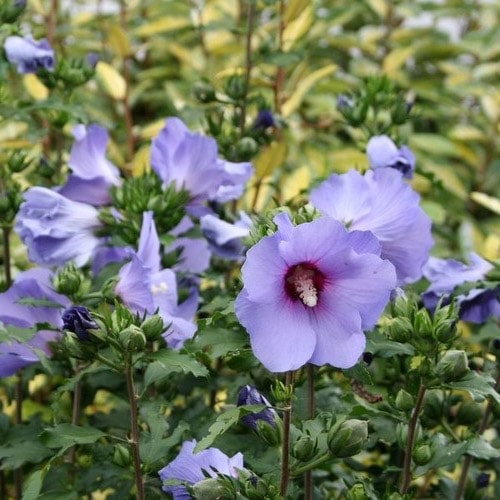
She is often called the blue bird. It flowers between June and the first frosts. We love the intense blue of its flowers with their garnet heart. It has a diameter of 8 cm, and can go up to 2.50 m. When exposed up to 20 °, it can become hardy with age. However, it must be protected from frost during its first years, when it remains the most fragile.
The aconite of Carmichael (Aconitum carmichaelii)

The aconite of Carmichael presents bunches of large flowers that are a beautiful purplish blue. These flowers grow between September and October which allows to follow the flowers of spring and summer. It measures between 1.20 and 1.40 m. They are very beautiful in bouquets. They enjoy the sun and the partial shade.
Clematis
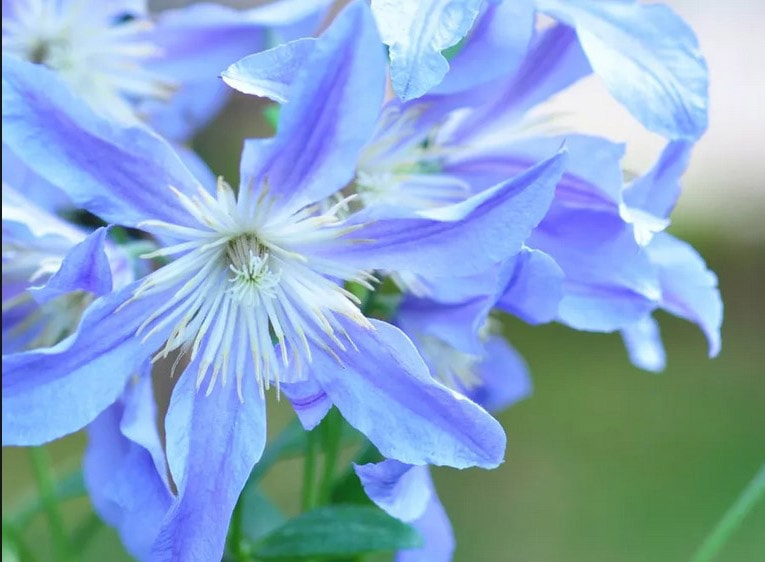
Clematis has a deep blue color. The flowers are very delicate and decorative. Some varieties offer darker or lighter tones. They bloom between June and September according to the varieties. It is hardy and perfectly resistant to diseases, the fruits are also decorative.
The Buddleia
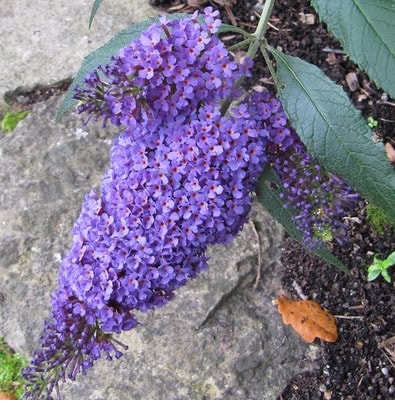
The Buddleia is a very joyful flower that offers a profusion of blue-purple panicles. It can reach 1 meter in height and its foliage is obsolete. It blossoms between August and September and is very decorative. It can be grown in hedges, in pots or in isolation. She is rustic.
aster
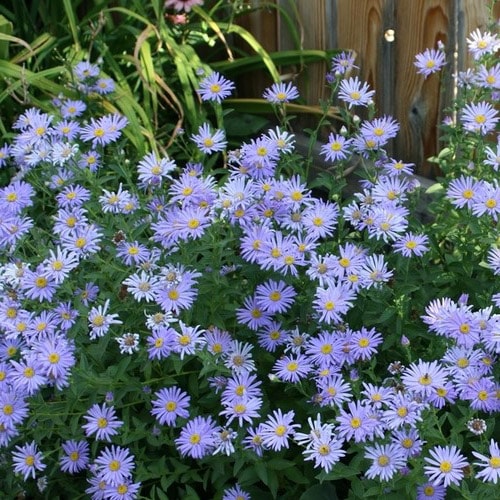
The aster has beautiful and large blue flowers drawing on purple. The leaves are rather narrow and heart-shaped for some species. The aster flowers according to the varieties between May and June, September and October or August and September. Some enjoy themselves on the edge, rock or solid and others are high reaching 0.90 m.
Streptocarpus
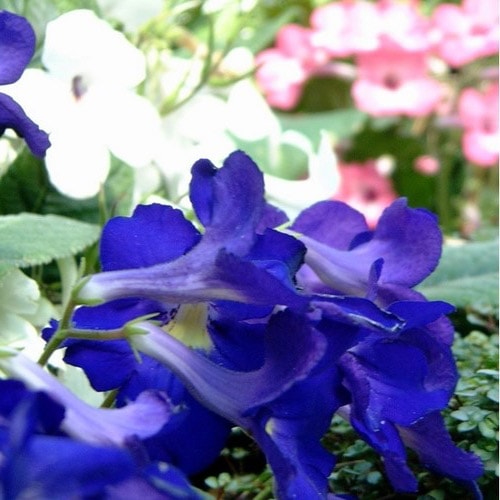
Streptocarpus is also called Constant Nymph. It has beautiful clusters of 2 to 5 blue flowers. The throat of the flower being creamy white. It has streaks of a dark purple hue. It is about 30 cm high. She is very pretty and it is a sure value in your garden.
The veronique
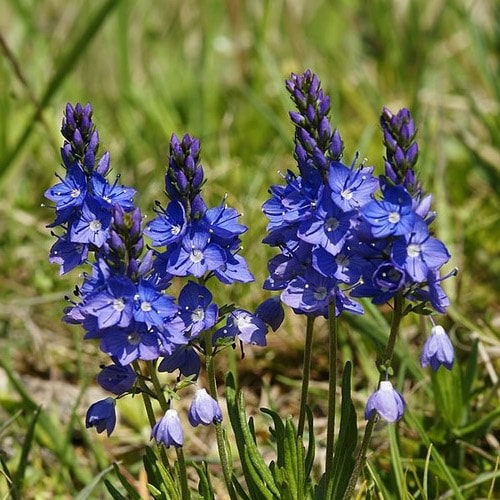
Veronica is a perennial herb that lives as an annual. It measures between 50 cm and 1 meter, it likes the sun and it flowers in ears between April and September. She likes classic soils without particularity. It is easy to grow and requires little care. Its foliage is semi-persistent.
The agapanthus
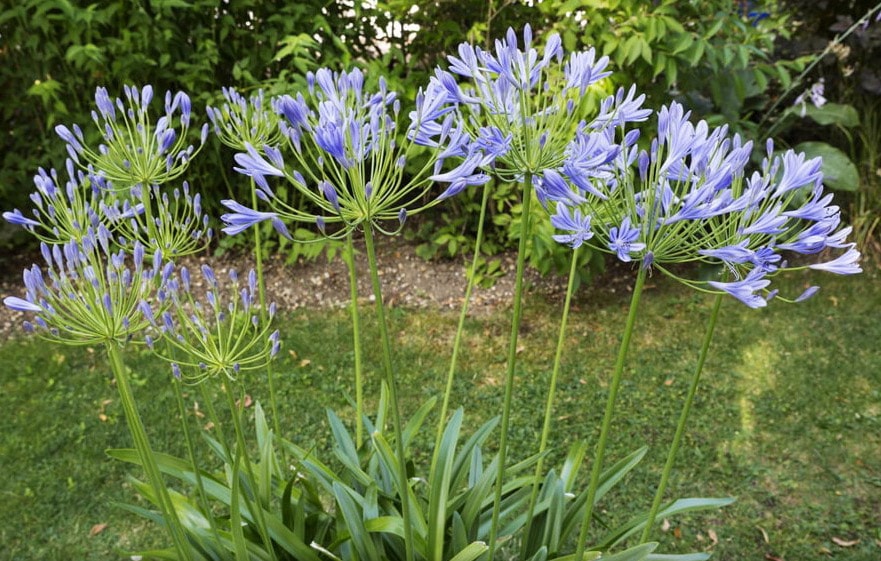
The agapanthus is a flower of a pale blue and very delicate. It flowers between June and September. Some species of southern France are planted in autumn and bloom in spring.
The iris

Irises are majestic flowers that illuminate your garden and are also very aesthetic bouquet. They are easy to grow, require little fertilizer and little water. They like themselves in the mountains. They bloom between January and July, depending on the varieties that are quite numerous.
Scaevola

The shades of scaevola vary according to the varieties between the very soft lavender blue and a very pure violet blue. It blooms from spring to autumn and is very easy to grow. Resistant to drought, it is found in the south of France. You will appreciate its exceptional flowering time.
Myosotis

This pretty, delicate blue flower grows naturally in the spring. It is planted according to varieties between January and March or September and December. It is grown as a biannual plant and is cold resistant. It is best to place it in shady places.
The Volubilis
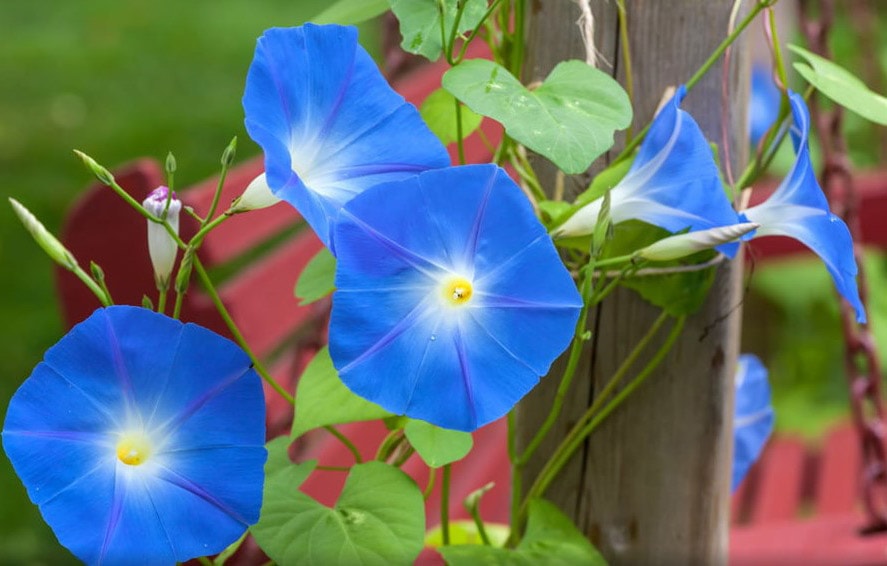
The volubilis are also called Ipomées or blue bindweeds, they are perennial or biennial flowers depending on the variety. There are 500 very different species in this family. They produce a lot of very decorative flowers. Their very powerful color decorates and perfectly decorates your garden between June and September. It is a plant that likes the sun and requires a very regular watering.
The perennial geranium

The perennial geranium adorns your beds with its pretty blue color drawing on the purple. It is easy to grow, but it likes rich soil and it requires water during the hottest periods. Some hybrid varieties bloom between May and the first frosts.
tricyrtis
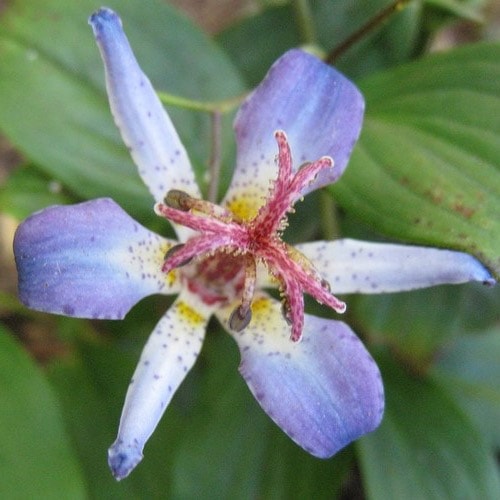
Reaching a height of 80 cm, this ultramarine flower with some purple tips and a white heart blossoms between August and October. It is perfect in edge or in solid and it is very resistant to the cold since it supports temperatures up to – 20 ° C.
The rhododendron

Rhododendrons are shrubs that bloom in the spring. Planting is preferably done in April or May except in warm areas where it is possible in October. He likes the heather earth or other acidic soil and the slightly shaded areas. They do not need pruning, but you will remove the faded flowers by hand so that the pimples can form.
The muscaris or "cluster hyacinth"

The muscaris is a fragrant flower, very popular in gardens. If it comes from the Mediterranean basin, it likes temperate climates but supports the cold very well. It blooms in the spring and bulb planting is done in the fall. We must renew these every year to always have beautiful flowers of quality.
Passionflower
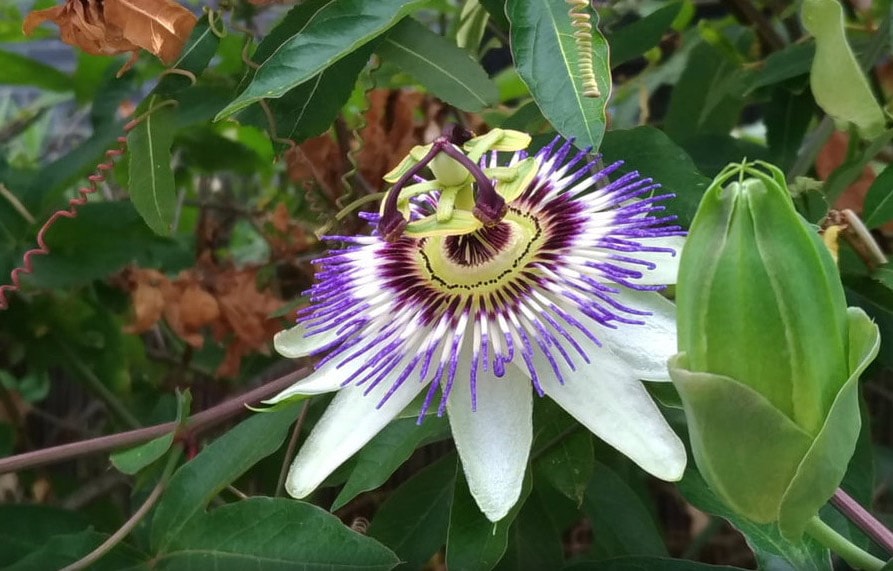
The passionflower is a unique flower that grows on sorts of lianas. She is called passion flower. This climbing plant is useful in the garden to hide a grid or a wall that lacks charm. It is hard to resist in winter, so it must be protected during the summer. If you live in an area with colder winters, you will have to farm it in and out during the coldest days. It flowers between July and November.
The Lilac

The lilac is very resistant and it grows quickly. He likes rich, well-drained soils. It prefers shaded or sunny environments. You plant it between September and October and it flowers between April and May. He asks for water in abundance.
The periwinkle
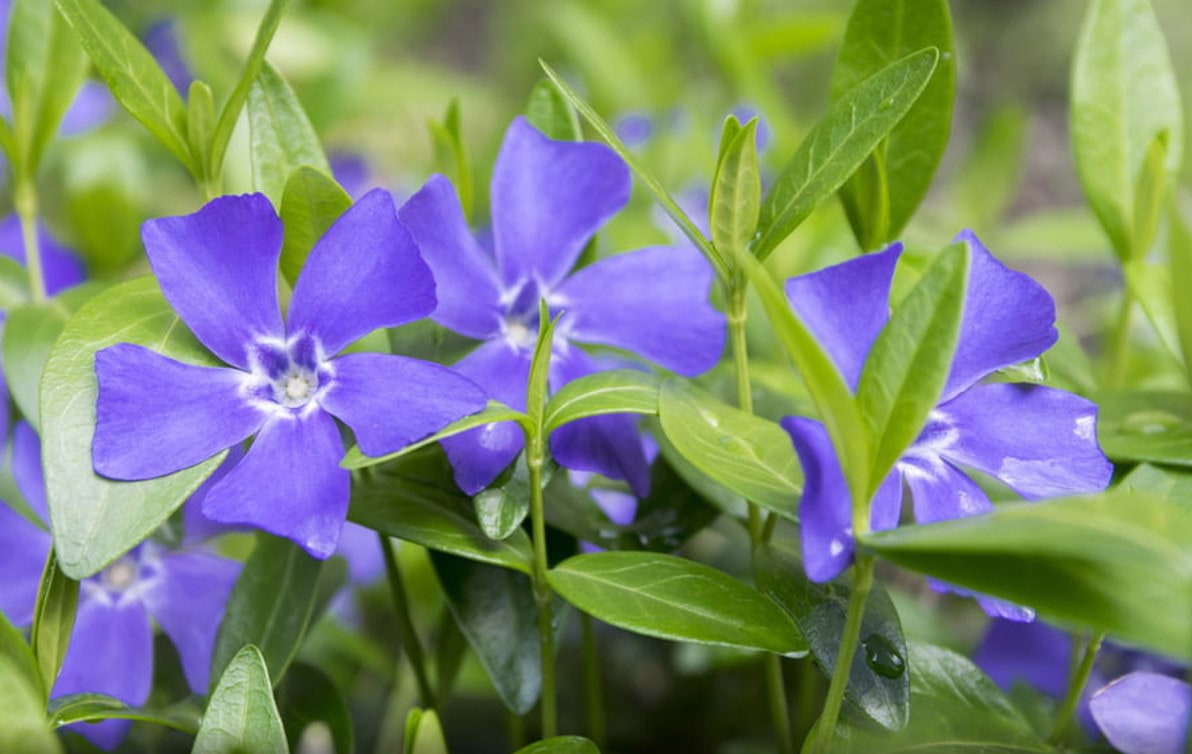
Periwinkle is a perennial with evergreen foliage. Planted between March and May, it enjoys shade and tolerates low temperatures. She hates drought, she needs moist soil. It is a plant that blooms between March and May.
Borage
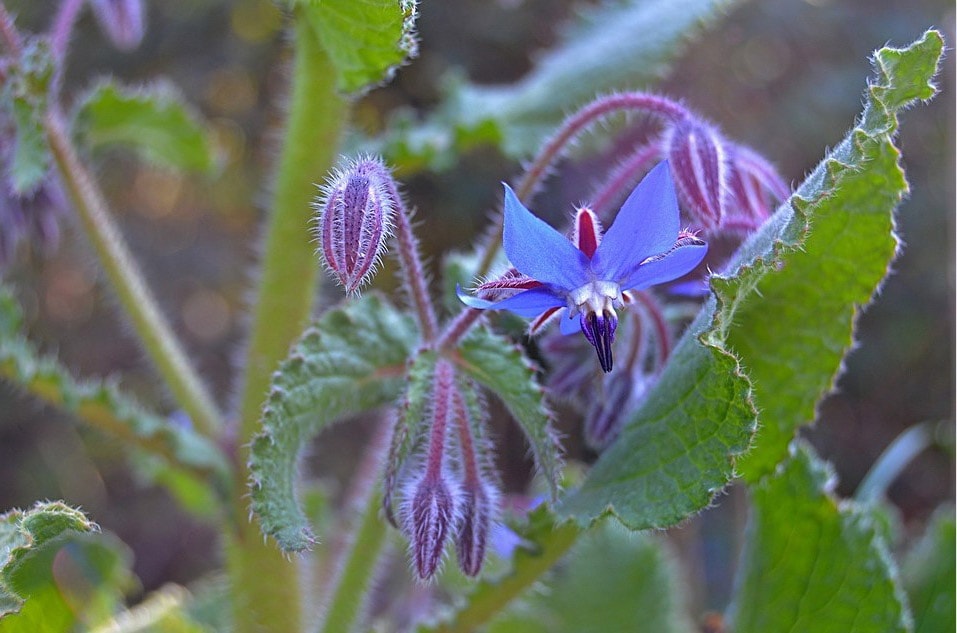
This small plant with blue flowers and downy stems is native to the south, it grows particularly well in gardens in temperate climates. The advantage of this plant is that once sown this plant regrows each year. It flowers from May to August.
Thistle
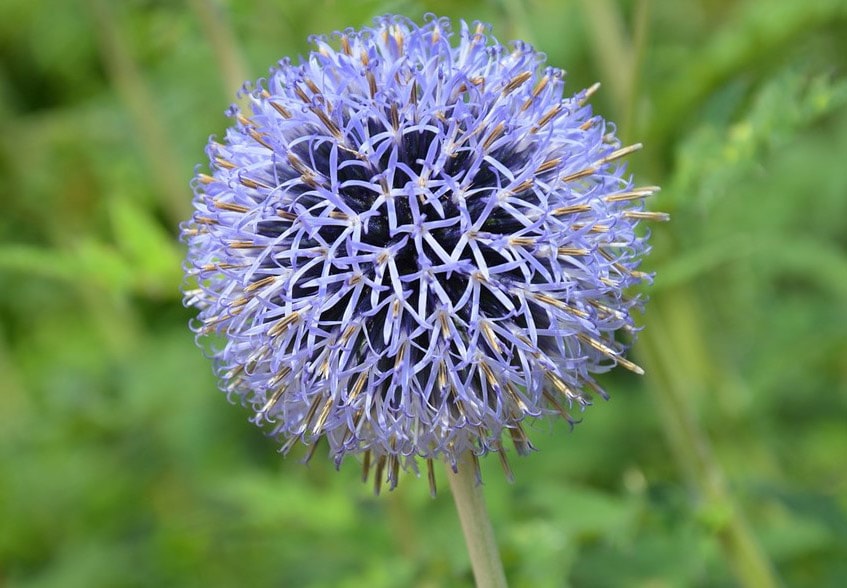
Blue thistles are planted between September and April and it flowers from July to October. These are very resistant flowers and require little maintenance. The thistles bear the heat and direct sun perfectly. They will be picked and possibly it is possible to dry them.
Nepeta
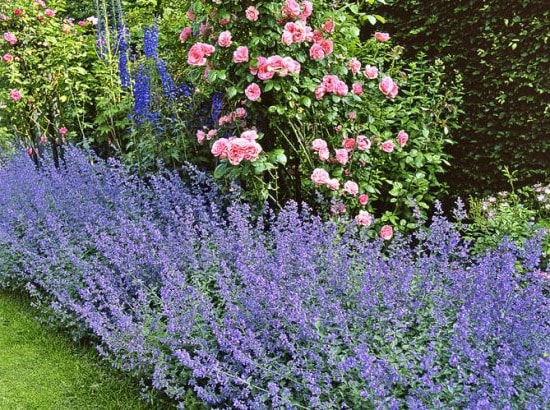
Nepeta is grown especially on the border, it likes a lot with roses, which it masks the foot. It presents small delicate flowers of a purplish blue which agree perfectly with the soft compositions. When the soils are rich, the flowers are a blazing blue while in full sun and on dry land, the hue is lighter. Just cut the faded flowers to bloom the next year.
Sage
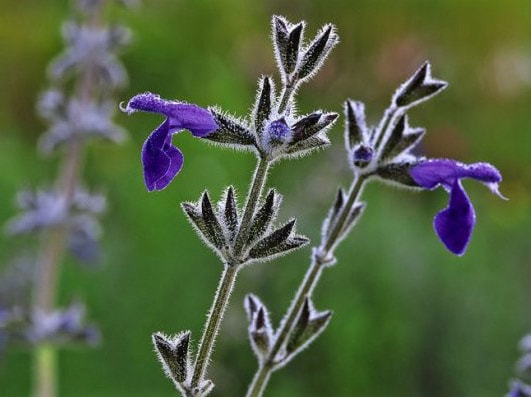
Sage is a plant that is particularly popular in the garden because it blooms from spring until the first frosts. It is very easy to cut and it supports drought particularly well. It is easy to maintain and adorns your gardens with brilliance because of its rather dark blue hue.
The caryopteris
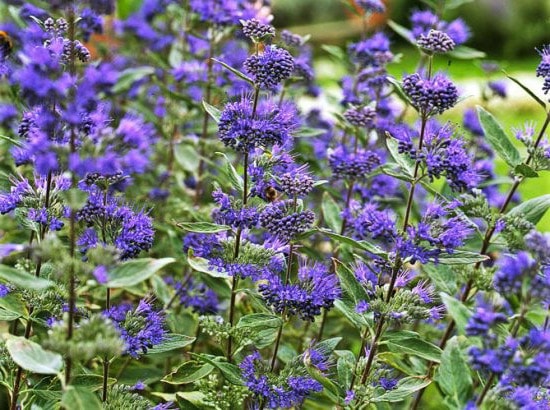
The caryopteris are flowers that have the advantage of blooming at the end of the summer when the others are not necessarily there. These small shrubs require little care and are perfect for decorating your flower beds with a very pure blue. Their pretty leaves contribute to the beauty of this plant.
You will like also :





